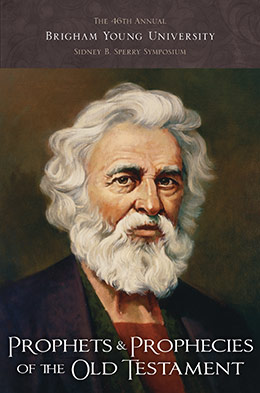Introduction
Aaron P. Schade, Brian M. Hauglid, and Kerry Muhlestein, “Introduction,” in Prophets and Prophecies of the Old Testament, ed. Aaron P. Schade, Brian M. Hauglid, and Kerry Muhlestein (Provo, UT: Religious Studies Center; Salt Lake City: Deseret Book, 2017), v-vi.
The Old Testament challenges its readers to understand the background and language underlying the text. Latter-day Saint students and readers of this book of scripture alike, often struggle to understand its prophetic imagery, as well as to find relevance of application for these Old Testament prophetic writings. Yet all other books of scripture in the Latter-day Saint canon presuppose that their readers have a sound knowledge of the Old Testament. An enhanced understanding of the restored gospel and its scripture is only possible with a fundamental understanding of the Old Testament. This volume aims to help modern readers by providing information and tools that help bring Old Testament prophets to light. The knowledge that is gained from the authors of this volume who contextualize the prophets will help readers understand not only the specific prophecies addressed herein, but many others contained in the New Testament, the Book of Mormon, and the Doctrine and Covenants. Moreover, the authors model ways to analyze and apply the texts they discuss, thus providing tools that will serve the reader well in his or her broader Old Testament reading. The articles presented herein will also help the reader to see how the gospel, prophets, and Christ himself span across millennia, as well as across other volumes of scripture. The prophets are thus both timely and timeless. Both aspects are investigated in the current volume.
Beginning with keynote speaker Elder Spencer J. Condie, this book explains Old Testament prophecies in their original linguistic, historical, and theological contexts, helping us to more fully understand the Old Testament and its relevance to us individually. Prophetic books and prophets such as Amos, Micah, Isaiah, and Obadiah are contextualized. Topics include the language of prophetic imagery and naming and their interpretative usage in scripture, the original context for becoming Saviors on Mount Zion in the book of Obadiah, fulfillment of the Immanuel prophecy of Isaiah in the New Testament, and how the Old Testament is used broadly across the New Testament. Authors of this volume also contextualize prophecies of Isaiah, Micah, and Amos through the lens of those prophets, from the perspective of God, and through the reception of the community and the peoples engaged in prophetic reception. The Old Testament is also discussed within the framework of its language as it is found in the Doctrine and Covenants.
We are happy to offer this volume to students of the Old Testament. We trust that it will inspire and inform your understanding of Old Testament and provide a greater understanding of the gospel of Jesus Christ and the scriptural canon as a whole.
Aaron P. Schade
Brian M. Hauglid
Kerry Muhlestein
Beverly Yellowhorse
2017 Sperry Symposium Committee
